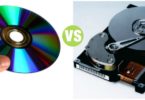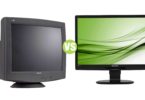SATA vs SCSI
Summary: Difference Between SATA and SCSI is that SATA (Serial Advanced Technology Attachment) uses serial signals to transfer data, instructions, and information. While SCSI interfaces, which also use parallel signals, can support up to eight or fifteen peripheral devices. Supported devices include hard disks, optical disc drives, tape drives, printers, scanners, network cards, and much more.

SATA
SATA (Serial Advanced Technology Attachment) uses serial signals to transfer data, instructions, and information. The primary advantage of SATA interfaces is their cables are thinner, longer, more flexible, and less susceptible to interference than cables used by hard disks that use parallel signals. SATA interfaces also support connections to optical disc drives. External disks use the eSATA (external SATA) interface, which is much faster than USB and FireWire.
SCSI
SCSI interfaces, which also use parallel signals, can support up to eight or fifteen peripheral devices. Supported devices include hard disks, optical disc drives, tape drives, printers, scanners, network cards, and much more. Some computers have a built-in SCSI interface, while others use an adapter card to add a SCSI interface.
Also Read:
Difference Between SATA and SAS
Difference Between SATA and EIDE
Difference Between EIDE and SCSI







Leave a Comment
You must be logged in to post a comment.